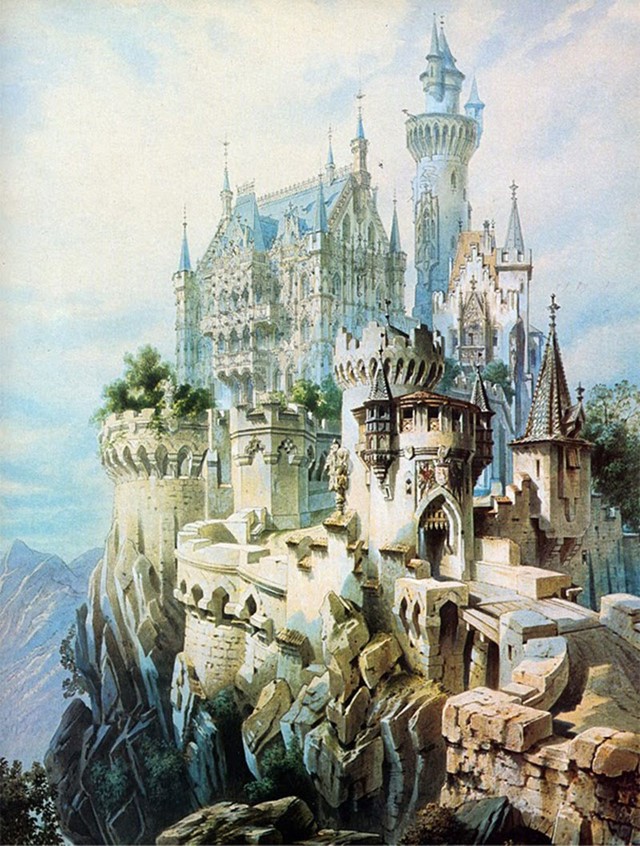A devoted fan of kitsch, crazy King Ludwig II of Bavaria left his legacy in the form of two unfinished fairytale castles, writes Laura Allsop
Though he was deposed from his throne and considered crazy, King Ludwig II of Bavaria left behind an extraordinary architectural legacy when he died in 1886. An inveterate dreamer, he is most famous for Neuschwanstein, the unfinished fairytale castle built atop a hill in southern Germany, decorated with kitschy depictions of medieval legends, and complete with indoor grotto.
This sprawling, turreted schloss should have been enough to sate the desires of any monarch, let alone a minor one such as Ludwig. But ‘The Fairytale King’, as he became known, was brimful of further schemes at the time of his unexpected death. (His body was found in the shallows of Lake Starnberg days after he was declared unfit to rule on grounds of insanity.)
One of these schemes was for another castle, built on the medieval ruins of Falkenstein near Pfronten. Judging from one of the few existing sketches of the proposed castle, created by theatrical scene-painter Christian Jank, Falkenstein would have been even more breathtaking than Neuschwanstein, a throng of Gothic towers rising spectacularly from a crag. Convinced of his direct line to God, Ludwig planned for the bedroom at this remote outpost to be combined with a chapel, his bed set into an apse painted with religious images. He may have been severely in debt at the time of his death, but Falkenstein was no pipe dream: already there was a road to the site and a water supply. This was in addition to yet more building plans, including a Chinese palace by Lake Plansee.

Ludwig gave new meaning to the word opulence. His own was born from an obsession with Wagner and a desire to cloister himself from the real world. “He’s the only person who could have made Fitzcarraldo apart from me,” Werner Herzog once said. He was thought to have been beautiful as a youth – official portraits, as well as Elizabeth Peyton’s later drawings, suggest a romantic hero – but became fattened on luxury and increasingly paranoid. He famously had operas staged just for him, only admitting others if he thought their presence would improve the acoustics. A night owl, he would ride around after dark in a sleigh decorated with electric lights and golden angels. Ludwig saw Neuschwanstein as a sacred sanctuary, a place set apart from everyday banalities and isolated in a mythical, idealised time.
With opulence and a childish streak came questionable, even laughable, taste. It’s not surprising that the castle in Disney’s Sleeping Beauty should have been inspired by Ludwig’s Neuschwanstein vision. Retreat alone wasn’t enough for him: in 1873, he began looking for a fresh territory to rule, which, had he been successful, might have yielded a whole kingdom’s worth of kitsch.
Perhaps the tackiness at Neuschwanstein was an inevitable byproduct of the attempt to translate the sublime into something real. Falkenstein might have fared even worse. It seems best to imagine it as Jank did: a place in a dream, shrouded in myth.
